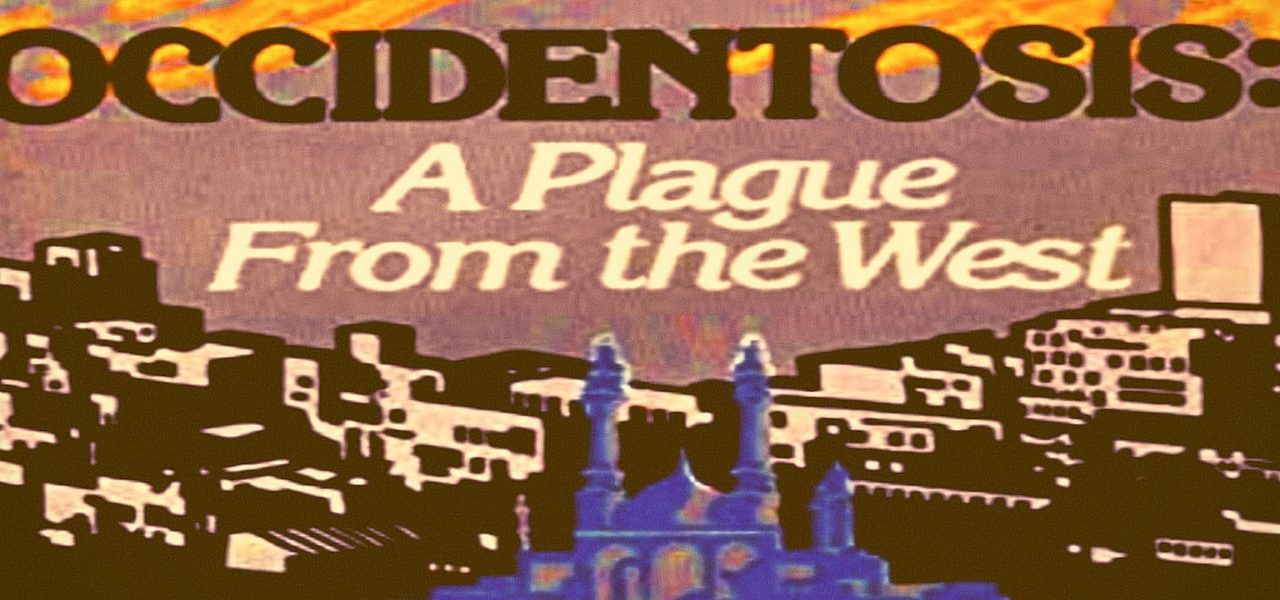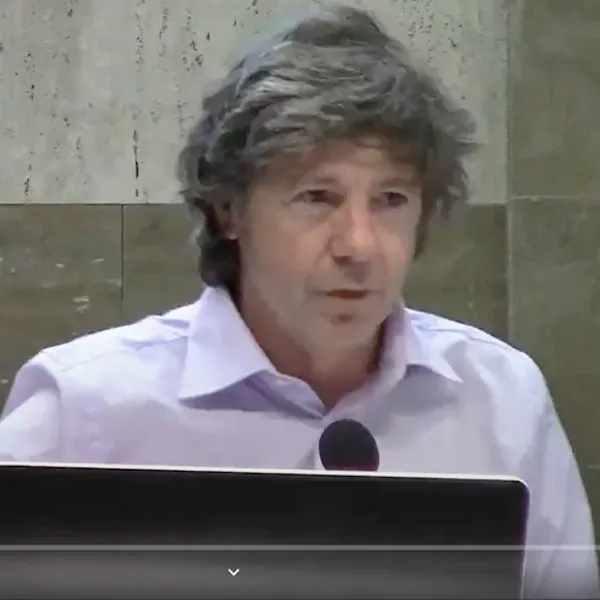The Islamic Revolution in Iran (1979) has been resonating as an event of prime importance in its region for the last 40 years. It is one of the first cases, when the political islam takes over the power in the Great Middle East. But the Islamic Revolution doesn’t come at an empty place. It was prepared both by the historic events of the 20th century in Iran (most of all by the American-British coup d’etat against Mohammad Mosaddegh in 1953) and by the political, philosophical and literary searches of the Iranian intellectuals in the period between 1953 and 1979.
After the 19 August 1953 coup d’etat the Iranian nation and a part of its elite felt traumatically the fact that their cravings for independence have been crushed by the mighty interference of the foreign powers, which controlled the oil industry of the Iranian monarchy. This happened while all over the world the times after the World War Two were characterized by anti-colonial struggle and the growth of the movement of the independent states. In Iran the beginning of the 60s was marked by the introduction of social-economic reforms, which were known as the ‘White Revolution.’ They included land reform, investment in transport infrastructure, in irrigation systems and dams, in improvement of the health system, support for the industrial development, easing of access to education in rural areas and mechanisms for profit sharing of factories among their workers. The idea was that Iran should develop as an industrial force, but the reform made the dissenting social layers larger. A lot of these people felt loss of their roots. They were forced to leave their places of birth and to settle in the big city, where they felt as well the strong control of their country and its elite by the international corporations and security structures. As the researcher Ervand Abrahamian wrote in 2008: The White Revolution had been designed to preempt a Red Revolution. Instead, it paved the way for an Islamic Revolution (Abrahamian, 2008, p. 140).

This is the context in which the first edition of the book Occidentosis is published in 1962. Its author is the Iranian writer, anthropologist, translator and intellectual Jalal Al-e Ahmad. This book becomes the first Iranian essay, which acquires international fame in the context of the Third world’s struggle for emancipation from the industrially developed nations. It is believed that Al-e Ahmad’s analysis in this text paves the way, on which the Islamic Republic walks — with an emphasis on the development of the country through its own resources, on the cultural authenticity in opposition to the perceived lack of character of the Westernized international elite, as well as on the effort for control over the technocratic knowledge, so that it could serve the interests of the Iranian society and not the global metropolises.
The present article will try to point out some of the basic ideas of Al-e Ahmad in his book on the relations between Iran and the West. His text is one of the first important attempts of the Iranian elites, which have lived the shock of the 1953 coup d’etat, to find a way forward for their society. This road is an antithesis of the thesis of colonial development, economic dependence and Westernization of the Iranian elite and nation, which was imposed in Iran at that time. However, Al-e Ahmad does something characteristic of the Iranian elites in the last decades – he defines a third way between two extremities, which both lead to Iran’s submission – the blind reliance on the West as a criterion for the validity of all the material and spiritual values and the withdrawal to the liveless Muslim tradition and atavistic fear from the machine/technology, which is compared by Al-e Ahmad to ‘a talisma.’ This third way represents ‘a demystification’ of the talisman, a conquering of technology’s secrets, a development of Iranian authentic subjectivity.
My goal is to contribute to the better understanding of the dynamics of ideas and society, which lead to the Islamic Revolution in Iran. Also, it is necessary that certain void in Bulgarian literary studies and in Bulgarian Iranian Studies be filled. The Iranian writers and intellectuals in the times before the Islamic Revolution use literature, in order to stir social change, which is a remarkable process in itself. It looks like in the last few years any social goals of Bulgarian literature are ignored. But maybe Al-e Ahmad’s ideas would be valid to an extent for our contemporary society, which looks for its road towards modernisation within the EU.
Al-e Ahmad has been object of research for a number of Iranologists, such as Mirsepassi, Vahdat, Kamrava, Boroujerdi, Gheissari and others. Mirsepassi compares the discourse of Occidentosis to the German “reactionary modernist” movement, which aims to preserve an authentic German cultural identity and is exemplified by Martin Heidegger, Ernst Junger and others (Mirsepassi, 2011, p. 121). Gheissari observes Al-e Ahmad’s fascination with tradition in his later life, evident in his desire that traditional institutions such as religious schools be sources for education about modern life (Gheissari 1998: 91). Daryush Ashouri believes that the term occidentosis is a Western concept transplanted in Iran (Ashouri 1998: 134-135). After Al-e Ahmad it has been impossible for the Iranian intellectuals to speak about Iran’s relation to the West without addressing the term occidentosis (Boroujerdi, 1996, p. 74).
In fact, any major Iranian or international researcher on philosophy and social development of Iran in the 20th century knows and studies Al-e Ahmad. In this context it is notable that Al-e Ahmad has been mostly unknown for Bulgarian social scientists, traditionally oriented towards Western sources of research. Hopefully, this article will contribute to the better acquaintance with Al-e Ahmad’s ideas in Bulgaria and the region.

The first variant of Occidentosis — a plague from the West appears in 1962 and represents a report for the Congress for the Aim of the Iranian Education[efn_note]I use here Robert Campbell’s translation of the text into English, published in 1984[/efn_note] . It is not coincidental that a whole chapter in this book is dedicated to the need for reform of Iran’s educational system. Al-e Ahmad was a teacher for a part of his life and his most famous literary work The School’s Director[efn_note]The novel was translated into Bulgarian by Marta Simidchieva and was published by the publishing house People’s Culture in 1983[/efn_note] uncovers the high level of crisis and chaos in the Iranian educational system in the 50s and 60s of the XX century. The author also knows well the Iranian society, thanks to many ethnographic studies, which he accomplishes as an anthropologist. That is why the text’s goal is clear — to push the Iranian public and elites towards social change.
The language of the book shows clearly that it is aimed at the Iranian people. Al-e Ahmad often uses phrases and metaphors from village life, which is done, evidently, in order to make the text more accessible to the masses. The very beginning of The Occidentosis defines the main problem that the Iranian society faces:
I speak of occidentosis as of tuberculosis. But perhaps it more closely resembles an infestation of weevils. Have you seen how they attack wheat? From the inside. The bran remains intact, but it is just a shell, like a cocoon left behind on a tree. At any rate, I am speaking of a disease: an accident from without, spreading in an environment rendered susceptible to it. Let us seek a diagnosis for this complaint and its causes-and, if possible, its cure (Al-e Ahmad, 1984, p. 27).
The author also gives his definition of the phenomenon:
If we define occidentosis as the aggregate of events in the life, culture, civilization, and mode of thought of a people having no supporting tradition, no historical continuity, no gradient of transformation, but having only what the machine brings them, it is clear that we are such a people. (Al-e Ahmad, 1984, p. 34)
Al-e Ahmad thinks that the main social problem and conflict in today’s world is the contradiction between the developed nations, called by him the West (in the recent decades the term the (Global North is more popular) — North America, Europe and the USSR, and the so-called East — or the developing countries from the Third world, which are in the periphery of the global economic centre. In the spirit of the dependency theory, which affirmed itself in the 60s of the XX century, Al-e Ahmad explains that the division line in today’s world is between those who own the machine — the industrially developed nations, which import raw materials and export industrial goods and countries such as Iran from the Third world, which export raw materials in order to import industrial goods. In one of the chapters of his text Al-e Ahmad gives a telling example — between 1952/53 and 1960/61 the Iranian export has grown around two times, while the import has grown eight times – both in terms of weight and in rials [efn_note]Rial is the currency unit in Iran[/efn_note](Al-e Ahmad, 1984, p. 84). Even if we take into account inflation, it is obvious that in this period Iran has affirmed its status as a periphery of the industrially developed nations.
As Al-e Ahmad points out, the Third world and Iran’s drama is not only that they are in a subordinated economic condition. Iran’s spiritual wealth loses its viability. Iranians have lost their subjectivity vis-a-vis the West. In the words of Al-e Ahmad himself today the Iranians “resemble an alien people, with unfamiliar customs, a culture with no roots in our land and no chance of blossoming here” and all they have “is stillborn”, in politics, culture, and daily life (Al-e Ahmad, 1984, p. 64). He believes that the Iranian cities and urbanization are an example of people’s uprootedness. But the same can be said about the educational system. It produces occidentotic Iranians, people, who are “jack-of-all-trades and master of none”, because even when they have a specialization they cannot support their life needs through it. These occidentotic people “have no character”, neither do they have “authenticity” (Al-e Ahmad 1984: 95). They have “no security” (Al-e Ahmad 1984: 95). “It is not that [the occidentotic] is cosmopolitan, that the world is his home. He is at home nowhere rather than everywhere”, adds Al-e Ahmad. In his view the basic property of these people is to be in fear — ”fear of tomorrow, fear of dismissal, fear of anonymity, fear of discovery that the warehouse he has weighing down his head and tries to foist off as a brain is empty” (Al-e Ahmad, 1984, p. 95).
So, the problem, which Iran faces, in Al-e Ahmad’s view, is both economic and existential. It resides in the fact that the Iranian of those times fears the machine and can’t connect with the motor and the spirit of his time. Even when he uses it, he looks at it as if it is a talisman, something supernatural and don’t hold its logic. “To achieve control of the machine, one must build it”, says Al-e Ahmad and adds immediately:
The machine is a talisman to us occidentotics, who shelter ourselves under its protective shadow and there look upon ourselves as immune to the vicissitudes of the age. We fail to note that this is a talisman that others have hung about our necks, so as to intimidate and exploit us. Let us be curious; let us grow up a little; and, finally, let us open this talisman and get hold of its secret (Al-e Ahmad, 1984, p 80).
How can this happen? Through education and Al-e Ahmad aims at its reform:
Education and national policy in this period should help define these disparities and contradictions – disparities among levels of attainment, among classes, among modes of thought – so that one might at least know what problems confront us. As the problems are clarified, the solutions will be found. The role of education is to help break down every wall that has grown up around the center of command and leadership in this country and blocked access to it, made it a monopoly. I speak of a democratization of the nation leadership, that is, of removing it from the monopolistic grasp of this or that person or family… Our educational system and our politics must use the young, ardent, rousing energies as a crowbar to uproot all the outmoded institutions. They must use them as materials to construct a new world. In this age of transformation, we need people of character, expert, ardent, principled people – not occidentotic people, not people who are sacks full of human knowledge, jacks-of-all-trades and masters of none, or who are merely decent, good natured, pliant, and earnest, or adaptable and placid, or meek and angelic. It is such people who have written our history up to now, and we’ve had enough (Al-e Ahmad, 1984, p. 132).
That is how it becomes clear that Al-e Ahmad wants a new subject of the Iranian modernity to come into being. It is a person, who must come from below, to have will to power, but also an Iranian physiognomy – to have roots in his homeland. It is not clear to what extent the Iranian elite of those times would be interested in the appearance of such a subject. But it turns out that after less than 20 years the cultural changes after the Islamic Revolution put an emphasis on a vision, similar to that of Al-e Ahmad – a contemporary Iranian who has his legs settled in tradition, but at the same time doesn’t fear technologies and even owns them in order to serve the new society.
Translation of #JalalAliAhmad‘s #Gharbzadagi (#Occidentosis). Fascinating insights into the influences on religiosity: pic.twitter.com/MTsW9r0cDU
— Marc Manley (@manrilla) September 21, 2016
Some researchers of the contemporary Iranian thought – such as Ali Mirsepassi, consider the overall discourse of Al-e Ahmad as a sign of “romantic authenticity” (Mirsepassi, 2011, p. 8), as something similar to the philosophy of Martin Heidegger and of other authors, who are connected politically with the German national socialism. One of the arguments is that the notion of occidentosis is introduced by Ahmad Fardid (Dehkordi, 2017, p. 32) – an Iranian philosopher and heideggerian. However Heidegger’s romantic authenticity of criticism on technology and the twin faces of nihilism — the liberal Anglo-Saxon countries and the communist Soviet Union, have a clear existential meaning. As for Al-e Ahmad, he sees in the battle for a new Iranian self a battle, which is not led in the name of the individual’s test of spirit. Owning the technology would serve for it to stop enriching additionally the rich West and to put it to serve the Iranian society on the road to its development.
There is another nuance here. In Al-e Ahmad’s view the Iranian society must dispel the magic of technology. But it has to do that without contracting the disease, which plagues the West and which is called by Al-e Ahmad mechanosis. He criticizes the Western people that they are subordinated to the machine — they wake always in time, they don’t lose their train, they are so disciplined that they lose their personality. In fact, the Iranian author believes that this conditions could spur the rise of fascist powers. Avoiding the mechanosis could be possible for the Iranians, if they manage to preserve their personality and character, while they control the machine in the same time.
Thus if in the West, through the inexorable logic of technology (and of capitalism), that is, as a consequence of mechanosis, specialization has replaced character, we, through the inexorable logic of occidentosis, have replaced both specialization and character with a facade of indifference: we cultivate the occidentotic. Our schools, our universities, our whole educational system, whether by design or through the unfortunate logic of the age, raise such people and deliver them to the nation’s leadership — occidentotics standing on thin air who disbelieve in any basis for belief. They have no party, share no hopes for humanity, know no traditions or myths. They retreat into a certain kind of vulgar Epicureanism. They grow corrupted and stupefied by corporeal pleasures. They fasten their eyes onto the lower members and onto superficialities. They care nothing for tomorrow, only for today. And all this is only reinforced by the radio, publications, textbooks, the closed laboratories, the occidentosis of the leadership, the twisted thinking of those returning from Europe. (Al-e Ahmad, 1984, p. 133)
Al-e Ahmad’s friendship with Khalil Maleki, the leader and ideologue of the Third Way party, is well known. During Mohammad Mosaddegh’s rule Maleki supports his government. Khalil Maleki and Al-e Ahmad are former members of the Communist Party of Iran — Tudeh, but they withdraw from its ranks after being disappointed by the Soviet Union’s intervention in its political line. Al-e Ahmad could be disappointed with Stalin, but in Occidentosis one can feel the spirit of Lenin, because the world is clearly divided between imperialist power and exploited people.
It is curious that in the spirit of the message, which comes from the Maleki’s party, Al-e Ahmad also looks for a third way for Iran. The possibility that Iran becomes completely westernized is not realistic, because Iran can never become Western — its Westernized people are suspended ‘in the air’ between the West and the East, without belonging anywhere. But the option that Iran closes in its traditions is also not viable. Al-e Ahmad criticizes the Shia clerics, who have answered the XX century secular reforms with a ban on radio, instead of doing what the Vatican did, taking hold of the new technologies and using them for religious means (Al-e Ahmad, 1984, p. 59). The second option is not viable, because this is what the Western people want — to transform the Iranian tradition into a museum artifact. If Iran chooses tradition, it will disconnect from the movement of world spirit, in which the machine is involved. That is why it is important that the Iranians don’t return to their past condition, but make ‘a return forward’ towards a future desired state, in which the machine serves them and they are part of the world spirit.
Al-e Ahmad is often accused in Iran and outside of the Islamic Republic that his ideas brought about and legitimized the Islamic Republic. But the label that Al-e Ahmad is an anti-Western thinker is simply not true. It is sufficient to recall that he was invited to American and British universities, and he visited the Soviet Union as well. He translated some of the most famous books of his times like The Plague by Albert Camus. On the contrary, Al-e Ahmad doesn’t criticize so much the West, as he criticizes the Iranians’ loss of subjectivity vis-a-vis the West, as Farzin Vahdat writes (Vahdat, 2000, p. 13).
In today’s complex world the thinking in the categories of West and East is limited and elementary. In order to be Western indeed, it is often necessary to assume in a dialectical way your ‘Easterness’ and peripheral state. The tension between the two poles of the human and social existence is more likely to give birth to change than their elimination. The Islamic Republic itself announces as its high foreign policy principle — neither East, nor West, but at the same time from this non-aligned position is open to constructive engagement with both poles of the world — the producers of the machine and its consumers.
In this sense Al-e Ahmad’s book Occidentosis — a Plague from the West brings novelty and formulates ideas, which remain valid even today — close to 50 years after the first draft. Isn’t today’s Iran trying to transform itself into part of the industrial North and isn’t this one of the reasons that severe sanctions are imposed on the Islamic Republic? If Iran continues to take hold of the machine, achieving nuclear, space and biotechnologies, perhaps Al-e Ahmad’s vision for the Iranian subjectivity will give its fruits. But each former periphery, which has set forth on the journey of becoming a subject faces ‘the danger’ of becoming a colonizer in its turn in its own system of peripheral powers.
References
- Abrahamian, E. (2008). A History of Modern Iran. Cambridge University Press
- Al-e Ahmad, J. (1983). Direktorat na uchilishteto. Narodna kultura, translator: Marta Simidchieva [Ал-е Ахмад, Джалал (1983), Директорът на училището, Народна култура, преводач Марта Симидчиева]
- Al-e Ahmad, J. (?) Gharbzadeghi. (Ketabnak-e elektronik Nosh-e Nashar),
- کتاابناک الکترنیک نسخهچناشر, غربزدگی- جلال آل احمد
- https://files.tarikhema.org/pdf/adab/jalal_aleahmad/gharbzadegi%20.pdf
- Al-e Ahmad, J. (1984) – OCCIDENTOSIS: A Plague From the West, Mizan University Press, translator: Robert Campbell
- Ashouri, D. (1998) – Ma va modernite. Sarat. Tehran ما و مدرنیته ۱۹۹۸..داریوش آشوری
- Boroujerdi, M. (1996) – Iranian Intellectuals and the West: The Tormented Triumph of Nativism, Syrcause University Press
- Dehkordi, J.F, & Mozaheb, M. A. (2017). Escaping from Orientalized Orientals: Studying Occidentosis as a Methodological Polemic for Regaining Eastern Identity versus West. English Language, Literature & Culture. Vol. 2, No. 4, pp. 31-36, doi: 10.11648/j.ellc.20170204.11
- Mirsepassi, A. (2011) – Political Islam, Iran, and the Enlightenment: Philosophies of Hope and Despair. Cambridge University Press
- Vahdat, F. (2000) – Return to Which Self? Al-e Ahmad and the Discourse of Modernity, Journal of Iranian Research and Analysis, November 2000, vol. 16, no. 2
This article was originally published on 20 November 2020 in the journal Manas of the Center for Eastern Languages and Cultures of the University in Sofia in its sixth issue (volume 1), 2020.
Photo: Part of the English-language cover of Occidentosis by Jalal Al-e Ahmad (source: Pixabay, CC0)
The Barricade is an independent platform, which is supported financially by its readers. Become one of them! If you have enjoyed reading this article, support The Barricade’s existence! We need you! See how you can help – here!










